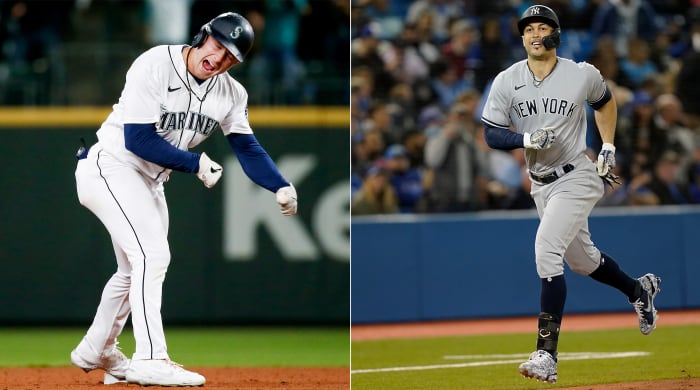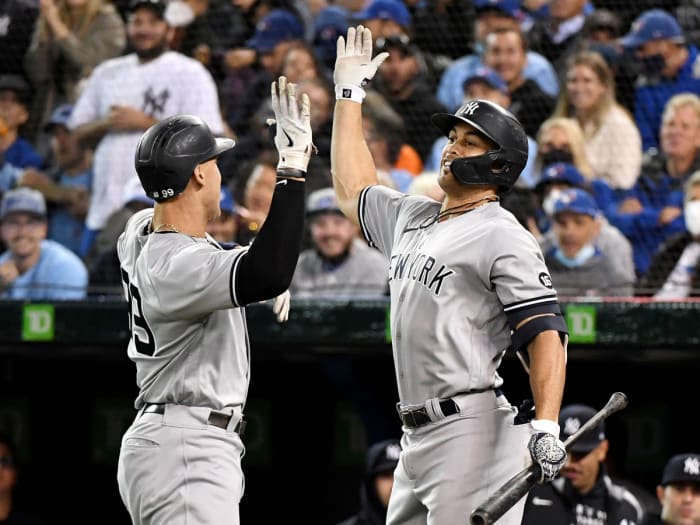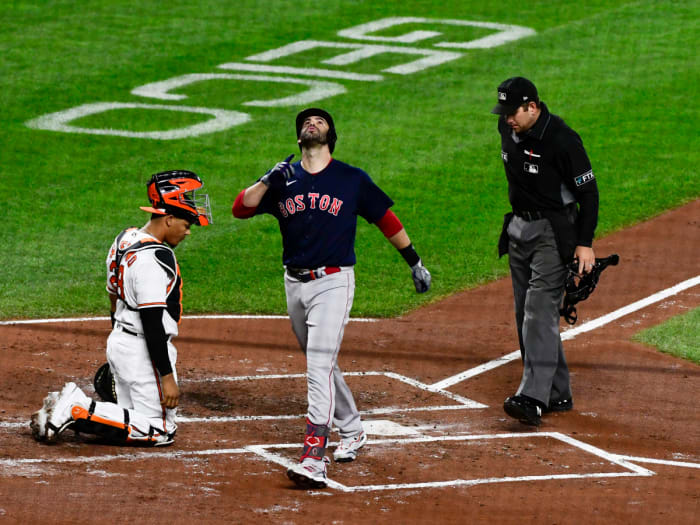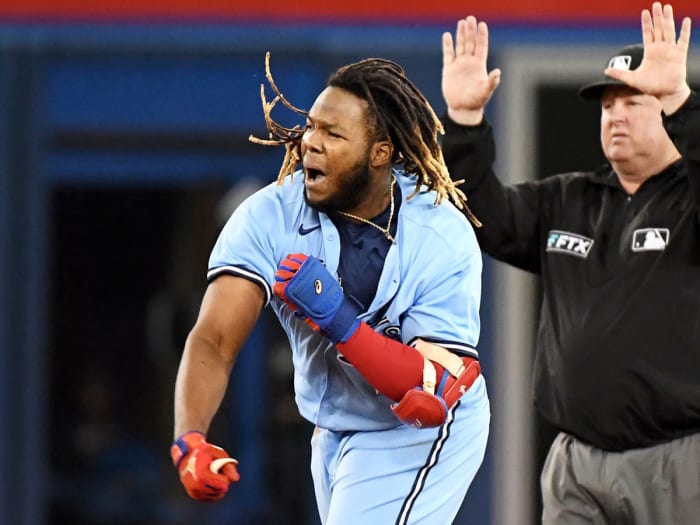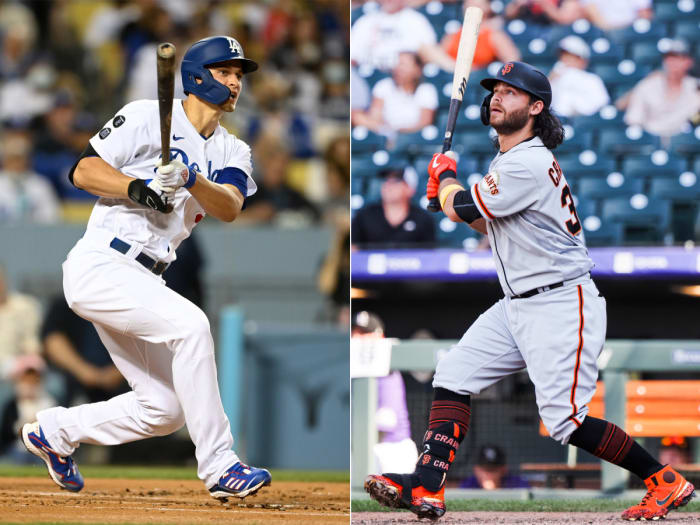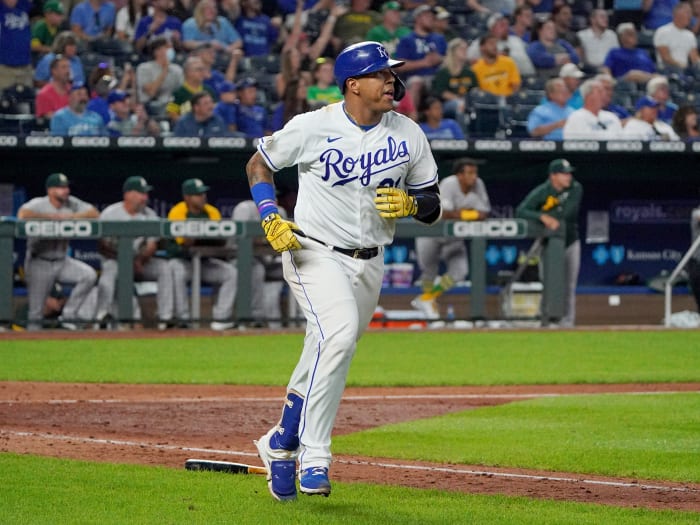
[ad_1]
Welcome to The Opener, where every weekday morning you’ll get a fresh, topical column to start your day from one of SI.com’s MLB writers.
Congratulations: You’ve made it to the final weekend of the regular season. But there’s still plenty left to figure out, with playoff spots, important stat lines and more still up in the air. Here’s a primer on what to watch for.
How much chaos will we get in the AL wild-card race?
There’s no longer any hope of an unprecedented five-way tie for two wild-card spots. (Turn your disappointment toward the A’s for getting eliminated Wednesday.) But there’s a lot of potential for drama, with the Yankees, Red Sox, Mariners and Blue Jays all within three games of one another. There could be a tie that results in a Game 163. There could be a three-way tie that results in an arcane system of drafts and conditional statements. There could be a four-way tie. There could be a situation that ends in none of the above but nonetheless involves a whole lot of turmoil! This is where the teams stand with three games apiece left to play.
| Team | Record | Games Behind | Final Opponent |
|---|---|---|---|
|
Yankees |
91–68 |
+2.0 |
Rays |
|
Red Sox |
89–70 |
— |
Nationals |
|
Mariners |
89–70 |
— |
Angels |
|
Blue Jays |
88–71 |
1.0 |
Orioles |
The Yankees control their fate. If they win at least two games this weekend, they’re a lock for a wild-card berth, no matter what happens with everyone else. For all the other teams … well, it’s messy.
It’s worth noting that all four of these clubs are going up against teams that currently have nothing to play for. (The Rays already clinched the best record in the American League and know that they’ll be facing whoever comes out of the wild-card game; the other three were eliminated from contention weeks or months ago.) But that doesn’t necessarily mean anything—as we saw this week, for instance, Baltimore relishes the chance to play spoiler. Which is all to say that we really have no idea what’s going to happen here.
It’s entirely possible that it all shakes out neatly, with one team in first, another in second and no ties to be seen. But it’s just as possible that we end up with one of the scenarios below.
• A tie for the second spot: This is what we’d get if the standings remain spaced as they are right now. (If, say, the Yankees and Jays each win once while the Sox and Mariners each win twice, or any other combination of outcomes that keeps New York in first with two teams tied for second.) We’d have a Game 163 on Monday, where the loser would go home, and the winner would go on to play the Yankees in the wild-card game Tuesday. In any other year, that scenario would qualify as a decently wild finish. This year … read on.
• A three-way tie for both spots: Let’s say the Yankees win one game while the Red Sox and Mariners both sweep and the Blue Jays get swept. Or maybe the Yankees and Mariners lose all three while the Blue Jays sweep and the Red Sox win two. Anything where three teams end up tied with a record of either 91–71 or 92–70—these situations would leave the three clubs deadlocked for the two wild-card berths, which would be, to use the technical term, a total mess.
Jeff Passan did a great breakdown of the various tie-breaking structures over at ESPN earlier this week. Here’s an overview of the basics, with a disclaimer that basics is a misleading term for even the simplest recap of a process as complicated as this one. A three-way tie would involve a draft of sorts—there are three different pathways for how to proceed, and the three clubs would get to pick who gets which, with the draft order determined by their head-to-head records:
| Yankees | Red Sox | Mariners | Blue Jays | |
|---|---|---|---|---|
|
Yankees |
— |
9–10 |
5–2 |
8–11 |
|
Red Sox |
10–9 |
— |
4–3 |
10–9 |
|
Mariners |
2–5 |
3–4 |
— |
4–2 |
|
Blue Jays |
11–8 |
9–10 |
2–4 |
— |
The Red Sox come out on top here, so if they’re involved in the final group of three, they’ll get the first pick. If the tie is among the other three teams, it’s a bit more complex, since New York beat Seattle and Seattle beat Toronto but Toronto beat New York. (We warned you that it would be complicated.) The tiebreaker then becomes which had the best combined record against all other teams—which is the Yankees.
On to the draft. Whichever club has the first pick would choose if it wanted to be Team A, B or C, with those roles defined like so:
- Team A will host an initial tiebreaker game against Team B, with the winner going on to take one of the spots in the wild-card game.
- The loser between Team A and Team B will go on the road to play Team C, with the winner going on to take the other spot in the wild-card game.
But with those three pathways, there’s really not much of a choice to make at all, as Passan noted. The one to go with here is clearly Team A—giving yourself two chances to win a game is much better than giving yourself just one.
Got it? O.K., let’s make it slightly more complicated now.
• A three-way tie for the second spot: A tie like this would come into play if, say, the Blue Jays sweep and the Yankees, Red Sox and Mariners all win two games. Or if the Yankees sweep while the Blue Jays win two and the Red Sox and Mariners each win one. This will involve taking everything from the three-way tie scenario described above and making it just a little bit zanier.
Team A and Team B would still play in an initial tiebreaker game. But instead of the winner going directly to the wild-card game while the loser goes to play Team C, the winner will now go to play Team C, and the loser will go home. Whoever wins that second game will then qualify for the wild-card game. That means that the obvious first draft pick here is Team C, not Team A, and that there’s even more potential for this one to get wild.
Which leaves just one last messy possibility …
• A four-way tie: This is a long shot. But it’s possible! If Toronto sweeps, New York gets swept, and both Boston and Seattle take two out of three—you’re looking at a four-way tie. There’s another draft process; this time for clubs to choose if they want to be Teams A, B, C, or D.
- Team A will host Team B.
- Team C will host Team D.
- The winners of those two games will play each other, and the winner of that game will go on to face the Rays in the ALDS.
The draft order is decided by the head-to-head records against all of the other tied teams, which in this case would be: Red Sox, Blue Jays, Yankees, Mariners.
You might notice that the four-way tie format is arguably less exciting than some of the options described above—it’s fun to see a pair of win-or-go-home games, sure, but compared to the drama of the two-tiered structure that you see for a three-way tie? To which we say: When you’re parsing the excitement level of a multiway playoff tie involving multiple single-elimination games, the baseball gods have blessed you, indeed.
Can the Dodgers possibly catch the Giants?
And after all of that in the AL … there’s still the possibility for a Game 163 in the NL! But the chances here are far more remote, and it’s all far more straightforward.
The Giants are in control of their destiny. If they win at least two of their three games against the Padres, they win the NL West. The Dodgers, meanwhile, have to hope that they can sweep the Brewers and that the Giants will lose at least two. If that happens, they’ll be rewarded with at least a tie-breaking Game 163, with an opportunity to win the division outright if L.A. sweeps and San Francisco gets swept.
If it happens, Game 163 would be hosted by the Giants, thanks to their season record against the Dodgers. And that’s the entirety of logistical details to cover on this one.
What about the stat lines outside the playoff races?
Finally, outside of the playoff drama, there are a few interesting statistical races that are worth keeping tabs on.
• Royals catcher Salvador Perez has already locked in the most home runs by a primary backstop in a season (48, topping Johnny Bench’s previous record, 45). But can he hit 50? Though he sprained his ankle earlier in the week, he seems committed to playing through it, albeit as a DH. And even if he can’t make it to 50, if he hits 49, he’ll have the franchise season home run record to himself. (He’s currently tied with Jorge Soler, who led the AL in 2019.)
• Can Bryce Harper or Juan Soto do anything to gain a final edge in the NL MVP race? Harper’s 1.033 OPS (176 OPS+) is close enough to Soto’s 1.010 (178 OPS+) that every little bit counts.
• What will Shohei Ohtani’s final stat line look like? No, he’s not pitching this weekend. But will he get any closer to the 30–30 club? (At 26 stolen bases, he would need a wild weekend to gain admission, but it feels wrong to say anything is truly impossible for Ohtani.) Will he grab the major league lead in triples outright? (He’s currently tied at 8 with David Peralta.) Will he somehow find another new way to dazzle us? And even if the answer to all of the above is “no,” it’s worth taking a moment to watch him for one last time this year and reflect on an unprecedented, marvelous gift of a season.
More MLB Coverage:
• Will This Mariners Rebuild Be Any Different?
• Bryce Harper Needs Your Doubt
• Trade Deadline Review: Which Moves Made a Difference?
• Juan Soto Is Teaching Us the Thrill of the Take
[ad_2]
Source link
